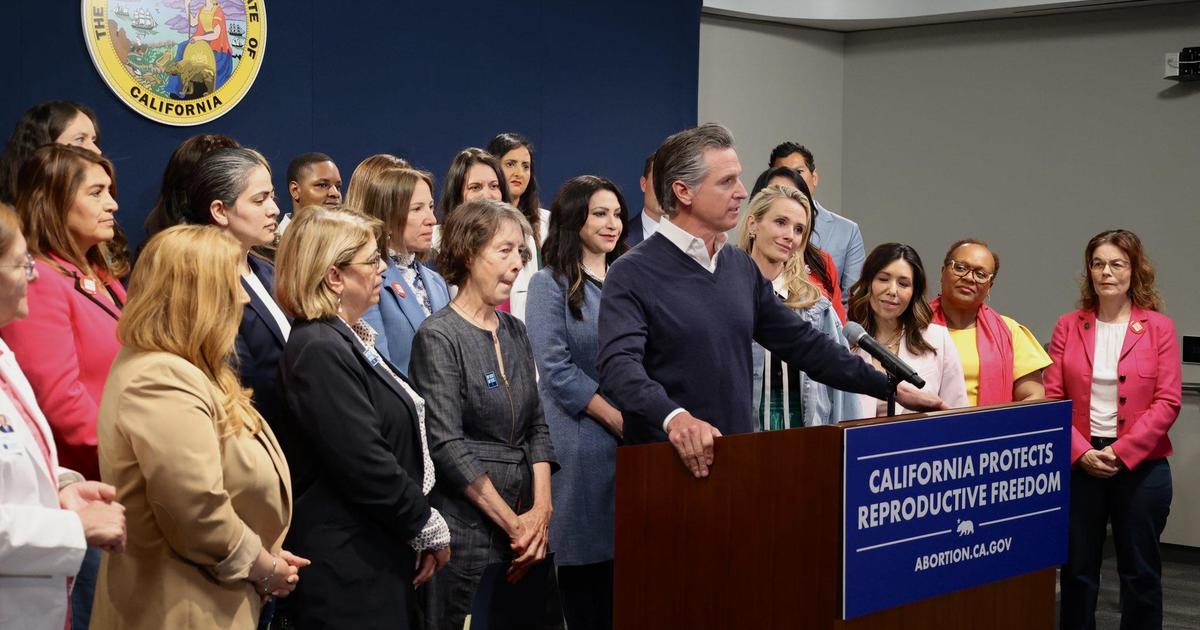California seeks to rein in water usage by closing a nearly 2-month gap in getting data from suppliers
(CNN) -- In response to prolonged drought across the West and ahead of the scorching summer months, California is asking its urban water suppliers to voluntarily report water consumption data sooner -- so the state can better assess whether its water conservation goals are being met.
Years of low rainfall and snowpack coupled with more intense heat waves have fueled the state's historic, multiyear drought conditions, rapidly draining its reservoirs.
Now California Gov. Gavin Newsom has responded by calling on local water agencies to submit water usage data by the third business day of every month -- or sooner -- in a bid to measure water conservation goals accurately and to foster greater transparency.
The California State Water Resources Control Board requests that water suppliers submit data outlining their monthly water production, the population served and the percentage of residential use earlier than usual.
As it stands, the state's suppliers have been required to share the data by the 28th of the following month. For instance, water-use data for the month of April were not submitted until the end of May and were not available to policymakers until June.
In a message to water suppliers, state water officials wrote, "access to current water consumption data is essential to state and local management of the drought emergency."
Last summer, Newsom pleaded with residents and businesses to voluntarily reduce their water consumption by 15%. But by the end of March, urban water usage was up by 19% compared to March 2020, the year the drought began.
It was the highest March water consumption since 2015, the State Water Resources Control Board reported.
In March, Newsom issued an executive order addressing the state's dire drought conditions. In response, the water board banned watering turf at commercial, industrial and institutional properties, excluding turf grass used for recreation or community purposes.
California's drought emergency now covers all 58 counties as the state is pushing into its third year of the megadrought. The board pointed to the worsening conditions, with the largest reservoirs in the state currently at half their historical averages.
This year, the state faced the driest January, February and March since California started keeping records more than 100 years ago, the board noted.
Facing back-to-back dry years and record-breaking heat waves pushing the drought into historic territory, California got a taste of the rain it was looking for in early fall last year, when the first big storm of the season pushed onshore in October.
Then, in late December, more than 17 feet of snow fell in the Sierra Nevada, which researchers said was enough to break decades-old records.
But suddenly precipitation flatlined in January, and water content in the state's snowpack this year was just 4% of normal by the end of winter.
Because of this, the state's two largest reservoirs -- Shasta Lake and Lake Oroville -- were also at "critically low levels" in May, the point of the year when they should be the highest.
In Southern California, water district officials announced unprecedented water restrictions, demanding businesses and residents in parts of Los Angeles, Ventura and San Bernardino counties to cut outdoor watering to one day a week, which began June 1.
And unlike cities such as Los Angeles and San Francisco, which overwhelmingly source water from the state's now dwindling reservoirs, much of rural California relies on groundwater that is already tapped out.
Not only has there not been enough precipitation to fill reservoirs, but the hot and thirsty air is also leeching water from what's left on the ground.
The-CNN-Wire™ & © 2022 Cable News Network, Inc., a WarnerMedia Company. All rights reserved.



